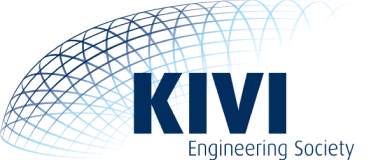Engineer The Future competition for students
One of the goals of KIVI students is to connect engineering students. Practically, we aim to achieve this goal by hosting events that connect and benefit us as future engineers and as a society. One of these events is Engineer The Future: sustainable wind turbine blades.
Today, it is becoming increasingly evident that an energy transition is required to achieve our future energy goals. Unfortunately, wind turbines, a supposedly green energy source, is not as sustainable as we thought. Due to their composition, wind turbine blades end up in the environment, as landfill, contributing to pollution rather than sustainability. KIVI students argues that this matter needs to be dealt with urgently, and calls all engineering students of the Netherlands to action by contributing jointly to a potential solution.
Why you should join ETF:
- Get in touch with engineering students throughout the Netherlands
- Gain in-depth information in your field of expertise
- Grow as an engineer by leading your own research
- Push boundaries and find your talents, step out of your comfort zone and search for answers in another engineering discipline
The Problem
The blades of wind turbines must meet a number of requirements: they must weigh little, be robust enough to withstand extreme weather conditions and that the stiffness of the material can be given a direction. That is why the blades are made of so-called fiber composites. Characteristic of this material is the chemical bond between fibers and epoxy resin, the property that also makes recycling these blades very difficult. In addition, the material is not expensive. As a result, the wind turbines are buried.
It is estimated that about 14,000 turbine blades will be scrapped, which amounts to about 40,000-60,000 tons of composite. In The Netherlands this concerns about 1,600 turbine blades. Dumping is prohibited in The Netherlands, unless the processing costs are too high in another way.
Recycling this material is therefore difficult. There are a number of alternatives:
- the blades can be used in cement kilns,
- recover the fibers,
- use the wind turbines as decoration.
The problem with the first option is that this is not a circular activity. The problem with the second alternative is that the strength of the fibers decreases. The problem with the latter alternative is obvious. We now ask YOU: “How can we deliver a more sustainable tomorrow?”
The competition
KIVI students is committed to a better future for everyone and tries to motivate technical students throughout the Netherlands to come together to tackle a pressing issue. With the 2022 Engineer the Future competition we allow students to look for a solution regarding the waste due to wind turbine blades.
Students can join one of the following tracks:
- Design
- Materials
- Repurposing
- Recycling
In groups of maximum 4 the students must create a report in which they describe their proposal. This is then reviewed by a jury consisting of experts from academia and industry.
The event will start on the 1st of February and the deadline for the final report will be the 1st of July. During the competition students will be assisted by lectures that support their project. In the beginning of september 2022 the award ceremony will take place.

